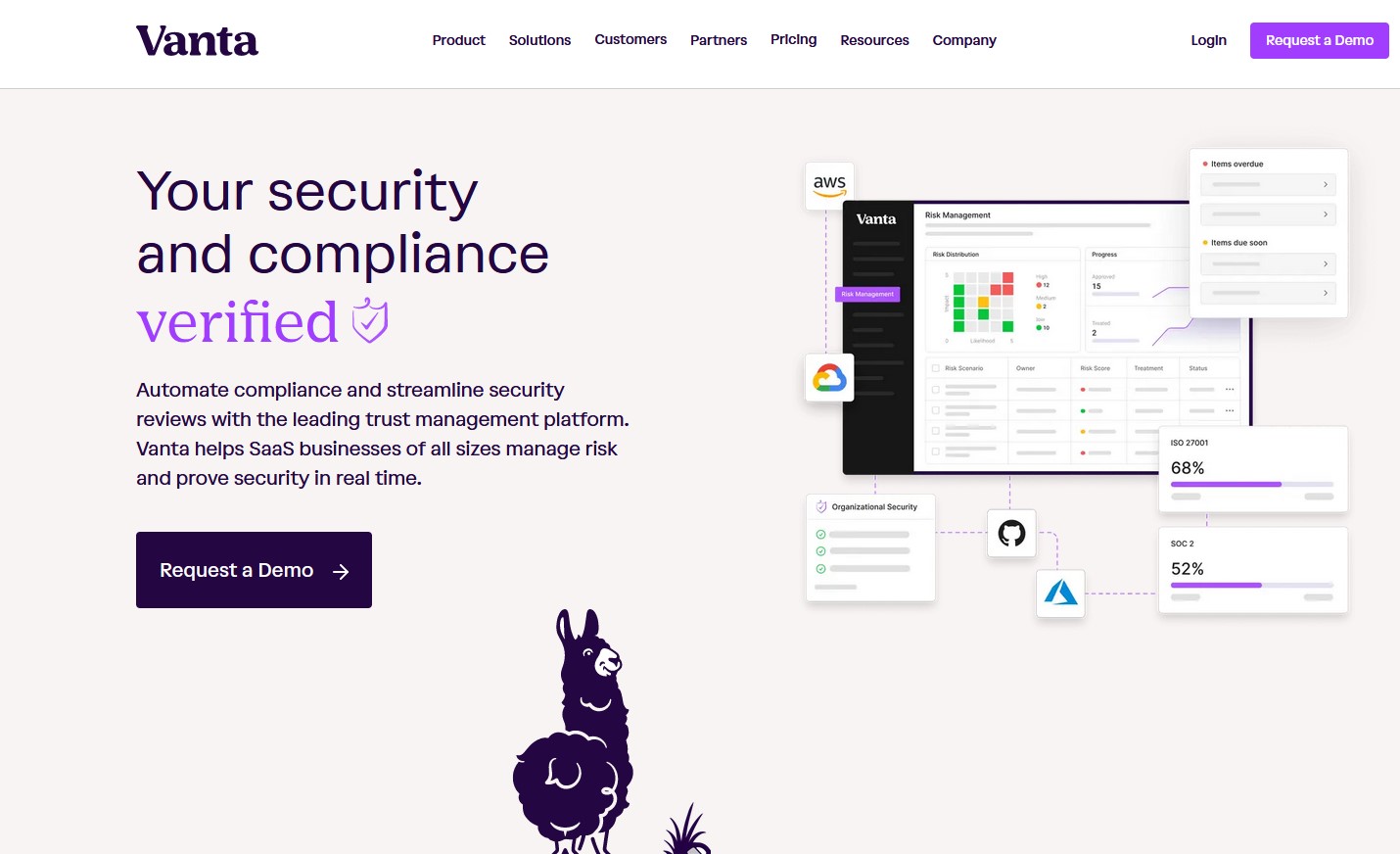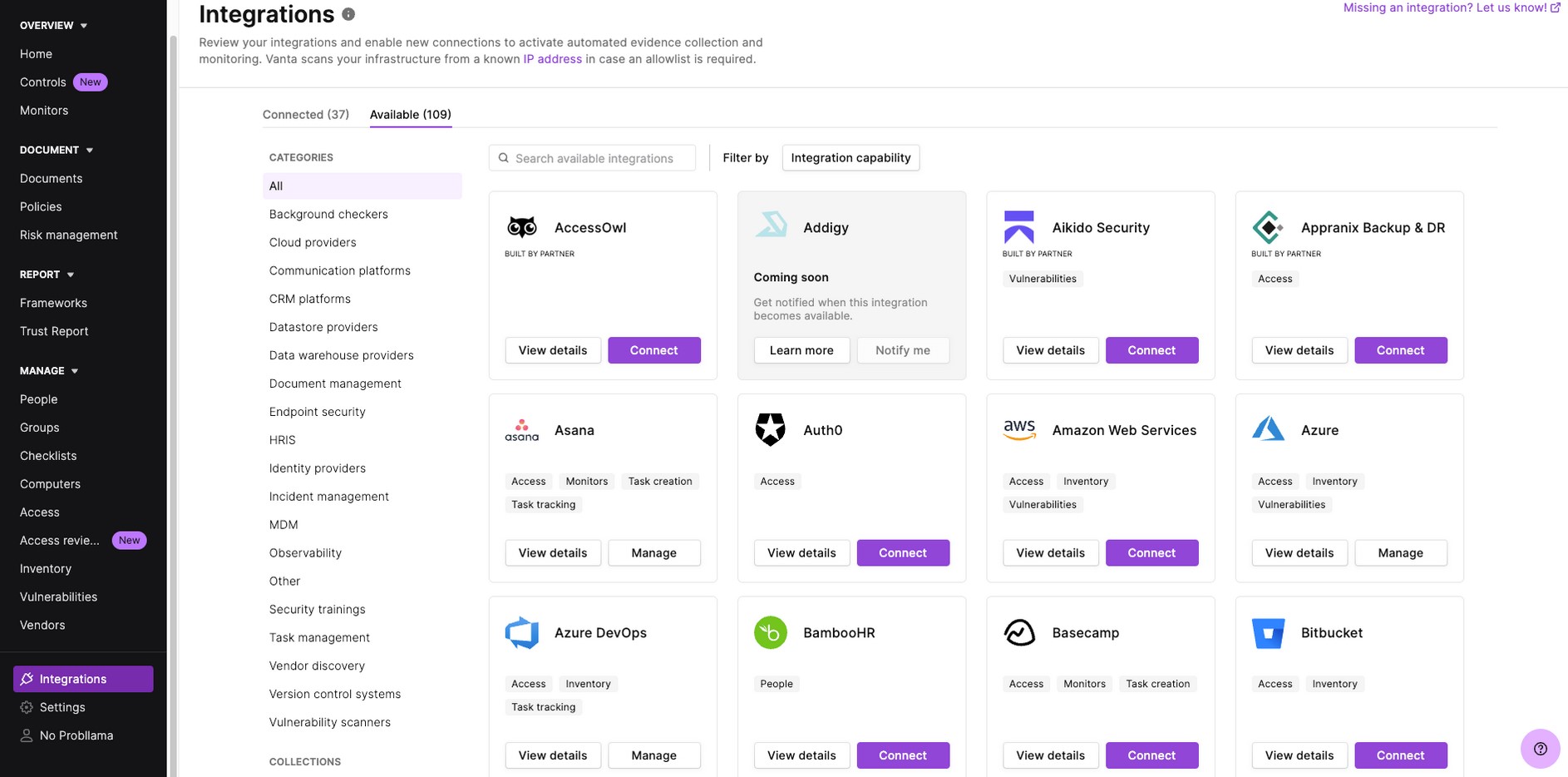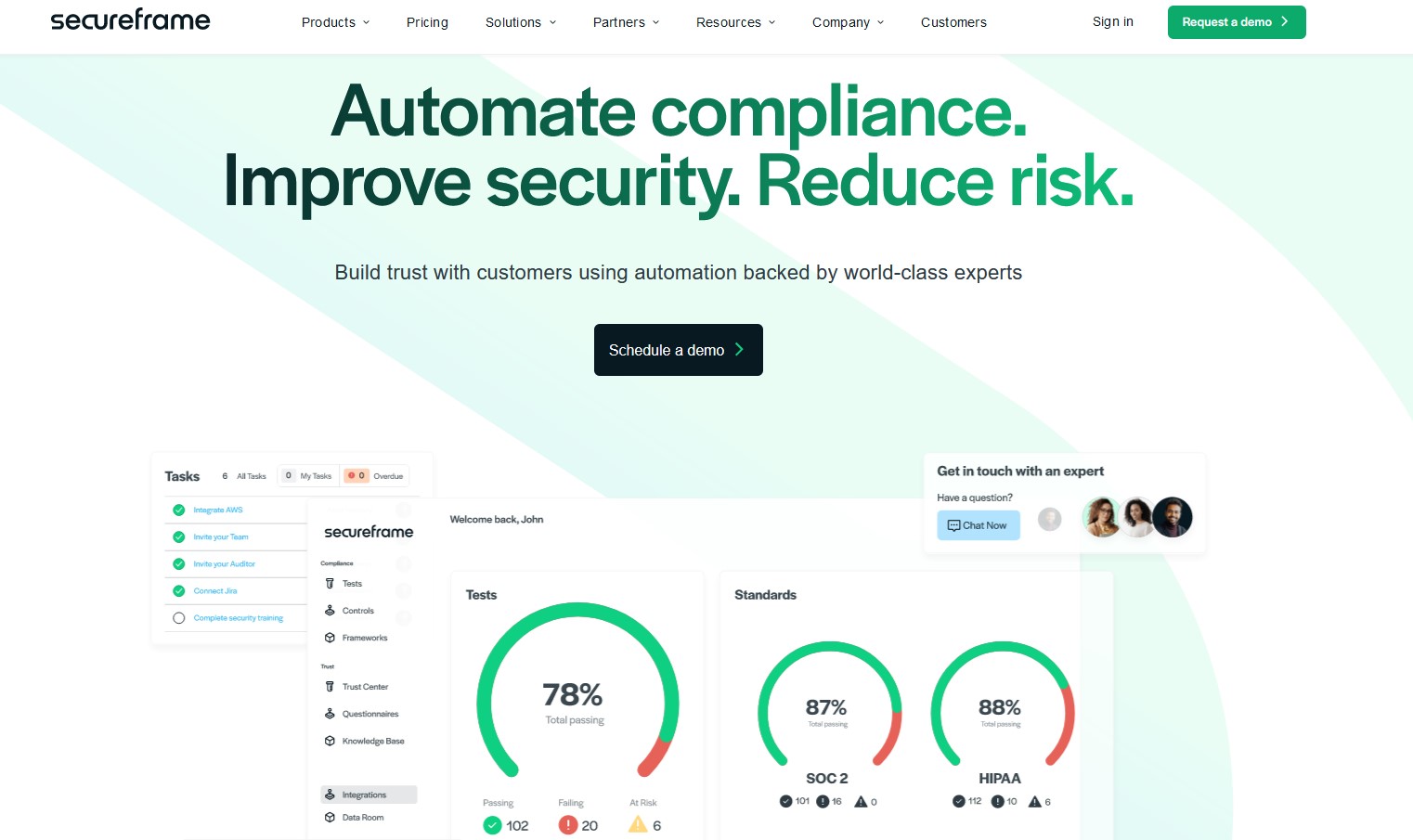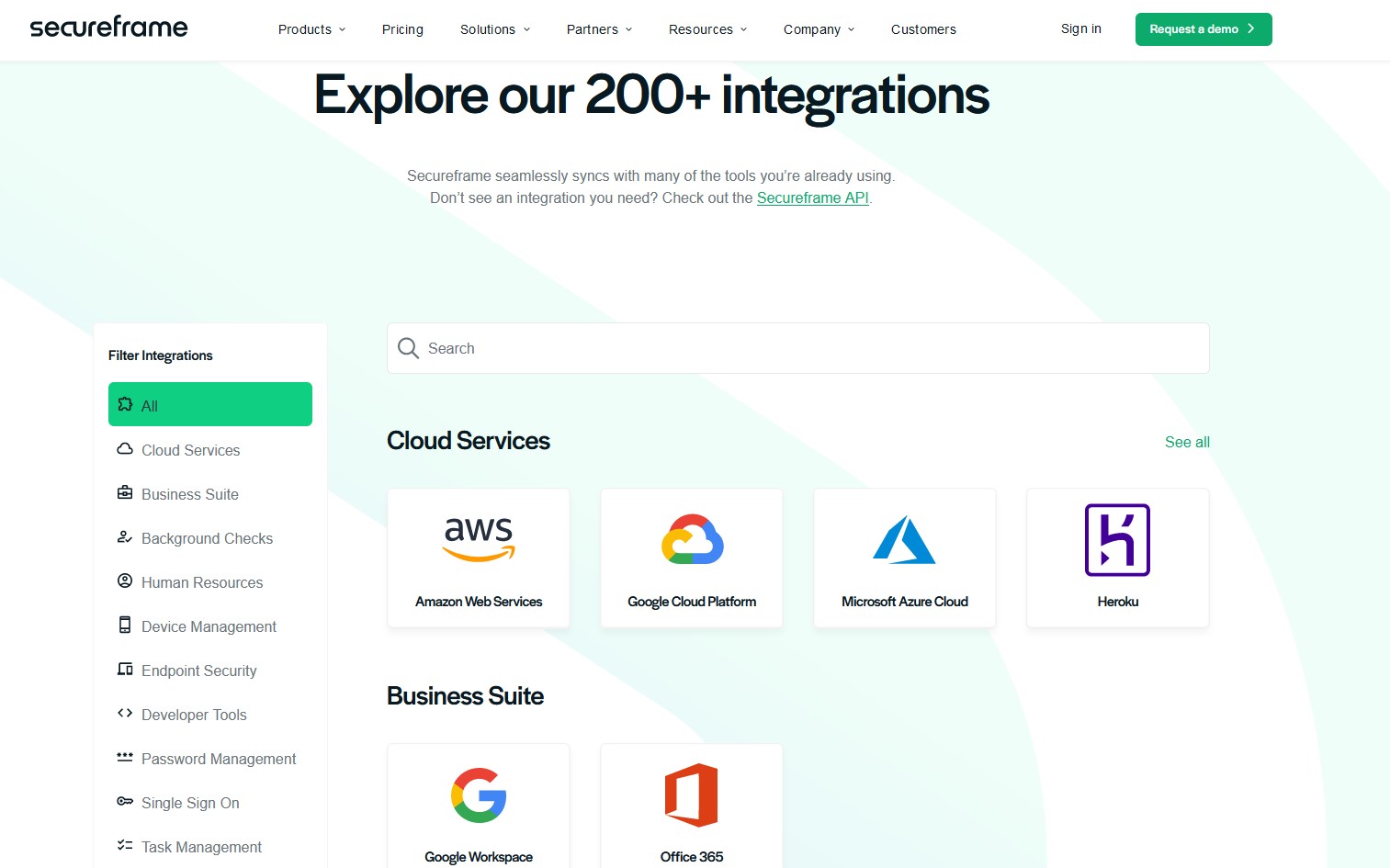Corporate compliance is increasingly urgent as regulations around consumer data evolve and become more complex. Compliance in the corporate sphere involves ensuring that all employees and activities align with laws and regulations set by various entities like governments, regulatory bodies, and industry associations. Compliance management combines documented procedures, policies, and audits to ensure adherence and minimize vulnerabilities.
Non-compliance with the latest regulatory requirements can result in hefty fines and disruptions in business operations. Manual tracking and monitoring are costly and error-prone, opening up opportunities for innovative compliance management solutions designed to make the job of Chief Information Security Officers (CISOs) and other senior management personnel easier.
What are Compliance Management Tools?
Compliance management is not just about checking boxes; it involves establishing robust business processes and controls. The demand for effective compliance management tools is at an all-time high. Compliance Management Systems (CMS) are specialized software or platforms designed to help organizations align their operations with regulatory and legal standards. These tools track current compliance status and forecast potential future regulatory challenges, crucial for navigating the expanding landscape of compliance requirements and ensuring seamless operations.
This article will explore the differences between two competitors in the compliance management space – Vanta and Secureframe. Both platforms are trusted by numerous companies for their ability to automate compliance processes and relieve administrative burdens. They offer comprehensive features, seamless integrations, and expert support, making them valuable assets for businesses navigating compliance requirements across frameworks like SOC 2, ISO 27001, HIPAA, and PCI DSS.
Methodology
To provide a comprehensive evaluation of Vanta and Secureframe, we employed a rigorous methodology that scrutinizes multiple facets of each compliance management tool. Our assessment covers several key criteria, ensuring a thorough comparison that addresses the specific needs and challenges faced by organizations in maintaining compliance.
1. Industry-Specific Needs
We examined how each tool caters to unique compliance requirements across different industries. This involves assessing support for various regulatory frameworks such as SOC 2, ISO 27001, HIPAA, GDPR, and PCI DSS, and determining the depth and breadth of features tailored to industry-specific compliance challenges.
2. Usability
Usability is a critical factor in compliance management tools, as it influences user adoption and efficiency. We evaluated the intuitiveness of each tool’s interface, the ease of navigation, and the overall user experience. This includes assessing the learning curve for new users and the availability of user guides, training resources, and customer support.
3. Scalability
Scalability is essential for growing organizations. We assessed how well each tool accommodates growth and evolving compliance needs. This involves examining the ability to handle increasing amounts of data, users, and compliance requirements without compromising performance or functionality.
4. Integration Capabilities
Integration capabilities are crucial for seamless workflow and operational efficiency. We analyzed how well each tool integrates with existing systems and platforms, such as cloud services and ticketing systems. We considered the ease of setting up and maintaining these integrations.
5. Pricing and Customization Options
We compared the transparency and predictability of pricing models. This includes flexibility to scale, additional costs for integrations or premium features, and customization options for specific compliance objectives.
6. Real-Time Monitoring and Alerts
Proactive risk management is a cornerstone of effective compliance. We evaluated real-time monitoring capabilities, including the ability to detect and respond to compliance issues promptly. This involves the accuracy and customization of alerts.
7. Data Security and Privacy
Data security and privacy are paramount in compliance management. We assessed adherence to security standards like data encryption, access controls, and incident response protocols. This ensures the protection of sensitive information and compliance with data privacy regulations.
8. Customer Support and Training
Effective customer support and training resources are vital for smooth implementation and ongoing use. We evaluated the quality of customer support, including response times, expertise, and support channels (phone, email, chat). We also assessed the availability of training materials and community forums.
9. Pricing and Budget Constraints
We considered the cost and budget constraints of different organizations, ensuring that both tools offer viable solutions without exceeding financial limitations. This involves comparing the overall value for money, considering the balance between cost, features, and benefits.
By analyzing the tools with these criteria in mind, we aim to provide a detailed and objective comparison of Vanta and Secureframe, helping organizations make informed decisions based on their specific compliance management needs.
Vanta Overview (Free trial, DEMO)
Vanta is a leading compliance management platform designed to help organizations navigate regulatory requirements efficiently. It offers a comprehensive suite of features, including integration capabilities with over 300 tools and platforms. Vanta supports HIPAA compliance and frameworks like SOC 2, ISO 27001, and GDPR. With continuous monitoring, risk identification, and streamlined audit processes, Vanta simplifies the compliance journey for organizations handling sensitive information.
Key Features
- Integration and Compatibility: Seamless integration with over 300 tools and platforms commonly used in organizational workflows ensures maximum compatibility and interoperability.
- Predictable Pricing Structure: Transparent and predictable pricing models eliminate uncertainty, allowing organizations to budget effectively and allocate resources without worrying about unexpected expenses.
- Cost-effectiveness: While the initial pricing may seem relatively high, Vanta provides long-term value by minimizing the risk of non-compliance penalties and data breaches. Automation features reduce manual labor and potential human error, resulting in significant cost savings over time.
- Continuous Enhancements: Regular updates and improvements keep Vanta at the forefront of compliance management technology.
- Accessible to Auditors: Vanta simplifies the audit process by centralizing compliance evidence and documentation in a repository accessible to auditors.
- Customer Support: Robust customer support services staffed by compliance experts ensure organizations receive timely assistance with implementation, configuration, and troubleshooting.
Pros:
- Comprehensive Framework Coverage
- User-friendly Interface
- Integration and Compatibility
- Continuous Monitoring
- Policy Management
- Comprehensive Reporting
Cons:
- Initial Pricing May Be Relatively High
- Learning Curve for Less Experienced Users
- Perception of Lack of Enhancements After Funding Rounds
- Some Integrations May Involve Additional Costs
- Complexities in Progress Tracking
Target Audience
Vanta appeals to a broad spectrum of users, including startups, medium-sized enterprises, and large corporations. Its user-friendly interface and automated features make it invaluable for establishing robust compliance frameworks, while its effectiveness in addressing complex compliance needs suits organizations with larger-scale operations and stringent regulatory requirements.
Pricing
Vanta offers a predictable pricing structure without price increases at renewal, making it an attractive choice for organizations seeking cost-effective compliance solutions. Customizable options ensure businesses of all sizes can find a pricing plan that suits their budgetary constraints.
Vendor Reputation
With nearly 7500 customers, Vanta has established itself as a trusted partner in the compliance management space. It’s the biggest player in the space by a fairly wide margin – followed by Drata, and then by Secureframe in a more distant third. Vanta’s commitment to regular updates, comprehensive customer support, and compatibility with various compliance frameworks underscores its versatility and effectiveness in meeting the diverse compliance needs of organizations.
Integration Capabilities
Vanta seamlessly integrates with over 300 tools and platforms commonly used in organizational workflows, ensuring maximum compatibility and interoperability. This interoperability allows organizations to leverage existing infrastructure and maximize efficiency in their compliance efforts.
Secureframe Overview (DEMO)
Secureframe is another leading compliance management platform known for automating compliance processes and relieving administrative burdens. It offers comprehensive features and seamless integrations, making it valuable for businesses navigating frameworks like SOC 2, ISO 27001, HIPAA, and PCI DSS. As the third-largest player in the space behind Vanta and Drata, Secureframe holds a significant position in the compliance management market.
Key Features
- Accelerated Compliance: Offers an expedited path to SOC 2 and ISO 27001 compliance, reducing the time from months to weeks.
- Seamless Integrations: Integrates with over 40+ cloud services and ticketing tools, enhancing overall efficiency and security coverage.
- Continuous Monitoring: Ensures ongoing compliance by monitoring system controls and demonstrating commitment to data security.
- Vendor Management: Provides a comprehensive system for assessing vendor security, managing compliance, and continuous monitoring.
- Efficiency and Cost-Effectiveness: Speeds up compliance processes, reduces manual work, and saves costs for businesses.
- Expert Support: Offers dedicated support from security experts throughout the compliance journey, ensuring personalized guidance and assistance.
Pros:
- Flexible pricing model tailored to specific security needs.
- Comprehensive features and seamless integrations enhance compliance efficiency.
- Accelerated compliance timeline reduces time and manual effort required.
- Expert support ensures personalized guidance and assistance throughout the compliance process.
- Cost-effective solution compared to competitors, offering excellent value for businesses.
Cons:
- May not offer as specialized options as some competitors, potentially limiting customization for unique needs.
- Pricing structure could be more straightforward for some businesses.
- Some customer feedback suggests Secureframe has a tendency to overpromise and underdeliver on its functionality compared to larger competitors like Vanta and Drata.
Target Audience
Secureframe serves businesses of all sizes and industries, offering tailored compliance solutions. It’s particularly beneficial for startups and SaaS companies navigating compliance standards like SOC 2 and ISO 27001. Its user-friendly interface and expert support make it accessible to organizations seeking efficient compliance solutions without extensive expertise.
Pricing
Secureframe offers two main services:
- Secureframe TRUST: Includes a thorough gap analysis to identify compliance gaps and vulnerabilities. Price varies based on the size of the organization and complexity of the organizational structure.
- Secureframe COMPLY: Provides subscription access to Secureframe’s compliance platform, which includes compliance monitoring, automated checks, and audit support. Prices start at $7,500 per framework activated, with an additional $7,500 annually for access for the first 100 employees.
Discounts may be available for customers with fewer than 10 employees and those purchasing multiple frameworks. Secureframe provides a 2-week free trial and demos for each product type and product tier.
Integration and Scalability
Secureframe seamlessly integrates with over 200 cloud providers and essential platforms, streamlining evidence collection and policy implementation. While the tool’s integration options may be fewer compared to some competitors, it ensures comprehensive coverage for compliance and security management needs across various organizations.
Vendor Reputation and Support
Secureframe is renowned for its fast compliance timelines, comprehensive set of available integrations, and high-quality support services. It maintains a solid reputation across multiple mediums, including customer reviews, auditor feedback, and employee reviews on Glassdoor. The tool’s user-friendly interface and commitment to security and privacy make it a compelling option for organizations simplifying their compliance efforts. As mentioned, some users report that Secureframe tends to over-promise about the tool’s functionality in order to compete with larger competitors, Vanta and Drata.
Head-to-Head Comparison
Here is a head-to-head comparison of the two compliance platforms.
Key Features Comparison
Vanta:
- Offers seamless integration with over 300 tools for maximum compatibility.
- Provides transparent, predictable pricing structures.
- Ensures long-term cost-effectiveness by minimizing risks.
- Regularly updates features to stay at the forefront of compliance management.
- Simplifies audit processes by centralizing compliance evidence.
- Offers robust customer support services.
Secureframe:
- Offers an expedited path to compliance for various standards.
- Integrates with over 40+ cloud services and tools.
- Ensures ongoing compliance through continuous monitoring.
- Provides a comprehensive system for vendor management.
- Speeds up compliance processes and reduces manual work.
- Offers dedicated support throughout the compliance journey.
Vanta Pros and Cons
Pros:
- Comprehensive Framework Coverage
- User-friendly Interface
- Integration and Compatibility
- Continuous Monitoring
- Policy Management
- Comprehensive Reporting
Cons:
- Initial Pricing May Be Relatively High
- Learning Curve for Less Experienced Users
- Perception of Lack of Enhancements After Funding Rounds
- Some Integrations May Involve Additional Costs
- Complexities in Progress Tracking
Secureframe Pros and Cons
Pros:
- Flexible pricing model tailored to specific security needs.
- Comprehensive features and seamless integrations enhance compliance efficiency.
- Accelerated compliance timeline reduces time and manual effort required.
- Expert support ensures personalized guidance and assistance throughout the compliance process.
- Cost-effective solution compared to competitors, offering excellent value for businesses.
Cons:
- May not offer as specialized options as some competitors.
- Pricing structure could be more straightforward.
- Some feedback suggests overpromising on functionality.
Target Audience
Vanta: Appeals to startups, medium-sized enterprises, and large corporations.
Secureframe: Serves businesses of all sizes and industries.
Pricing
Vanta: Offers predictable pricing without renewal increases.
Secureframe: Offers two main services with pricing varying based on organizational size and complexity.
Vendor Reputation
Vanta: Established as a trusted partner in the compliance management space.
Secureframe: Renowned for fast compliance timelines and comprehensive integrations, though some feedback suggests overpromising on functionality.
Integration Capabilities
Vanta: Integrates with over 300 tools and platforms, ensuring maximum compatibility.
Secureframe: Integrates with over 200 cloud providers and platforms.
Conclusion
Ultimately, the choice between Vanta and Secureframe depends on specific needs, priorities, and budget constraints. Vanta excels in integration capabilities and predictable pricing, while Secureframe offers streamlined implementation and comprehensive compliance monitoring. Organizations should evaluate these factors to determine the best fit for their compliance management requirements.




